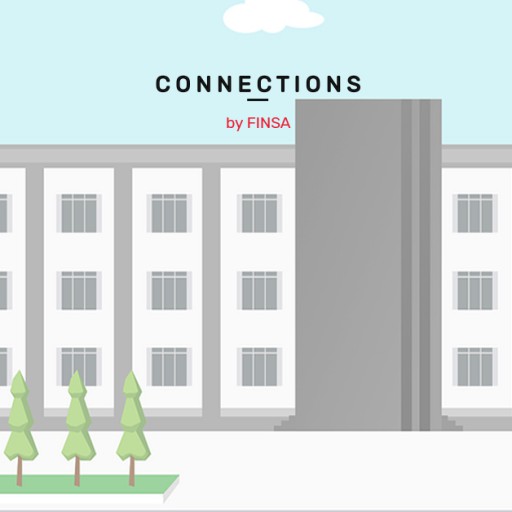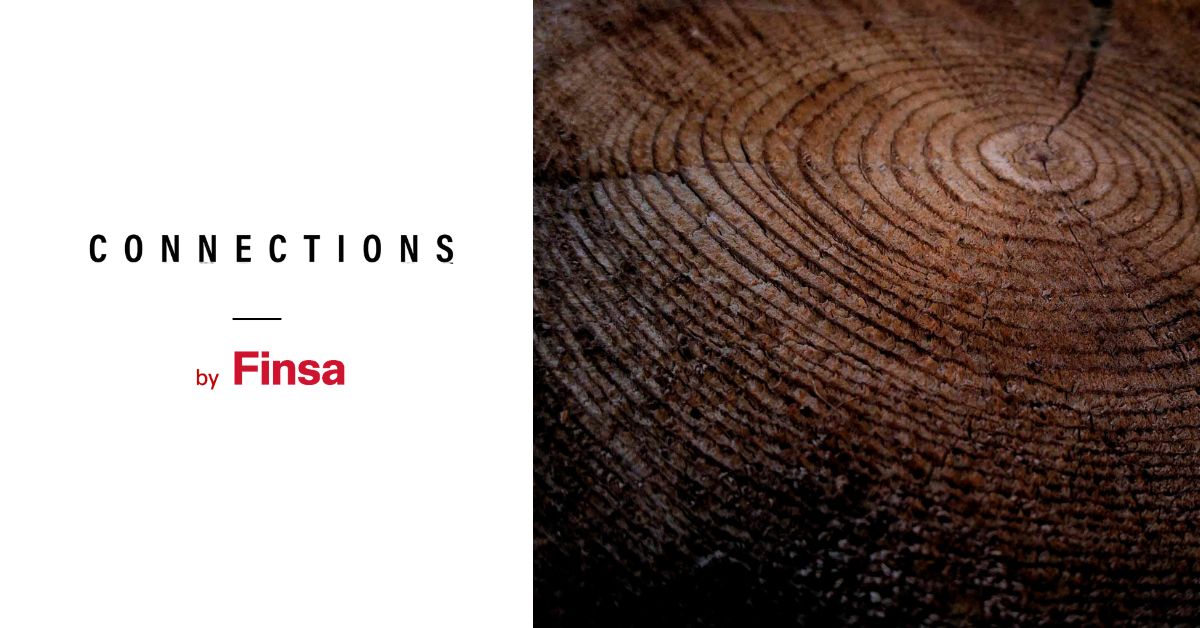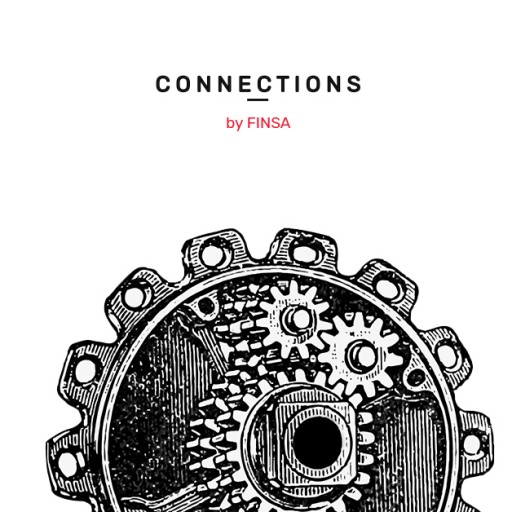If the coronavirus pandemic revealed anything, it was our need to socialize and to do so, if possible, in open environments. The new models of flexible spaces also showed us that it is possible to work, live and socialize outdoors, those same spaces that used to be underutilized even in places where the climate favors their use in any situation.
From Connections by Finsa we want to help you make your work in these areas shine, and therefore we talked to enterprises that expose, through these three success stories, what are the elements that you should consider in your projects beyond the interiors.
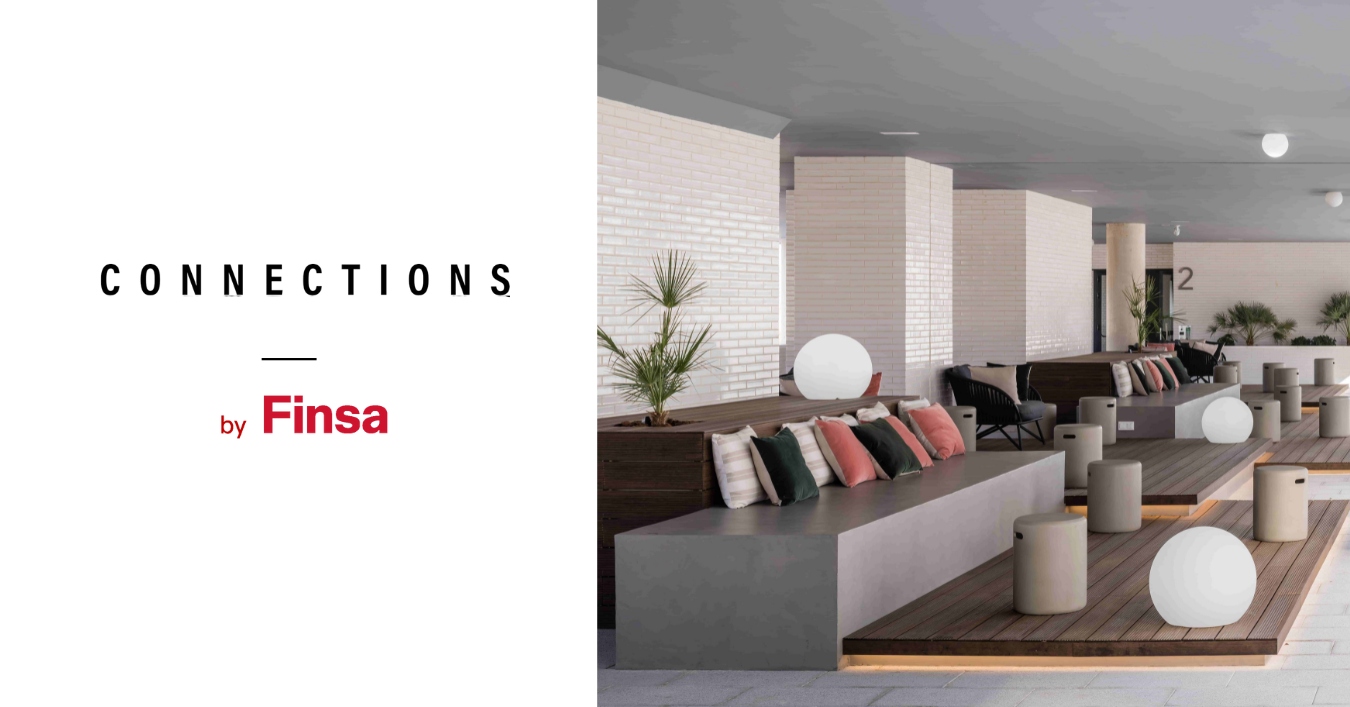
Keys to avoid failure in the design of an outdoor area
There are two factors that are boosting the exploitation of real estate assets beyond indoor areas, according to Alfaro-Manrique Atelier: “wellness, linked to outdoor living, and a more holistic approach to projects that monetizes the differences in habitat design”. They explain that these two issues have helped them to be “an important tool of persuasion with users and clients. We could say that we are treating them with as much or more resources than the interiors themselves,” they say.
While a terrace can be an attraction in itself, ISG states that we should not be tempted to think that the terrace will be used simply because it is an outdoor space. “A usable, durable and multipurpose habitat will prevent us from finding ourselves with a collection of patios and terraces that people will use exclusively to access the office or their homes”. Therefore, it is worth considering the same effort that we dedicate to interiors so that these places are protagonists for much more than just having the sky as a roof.
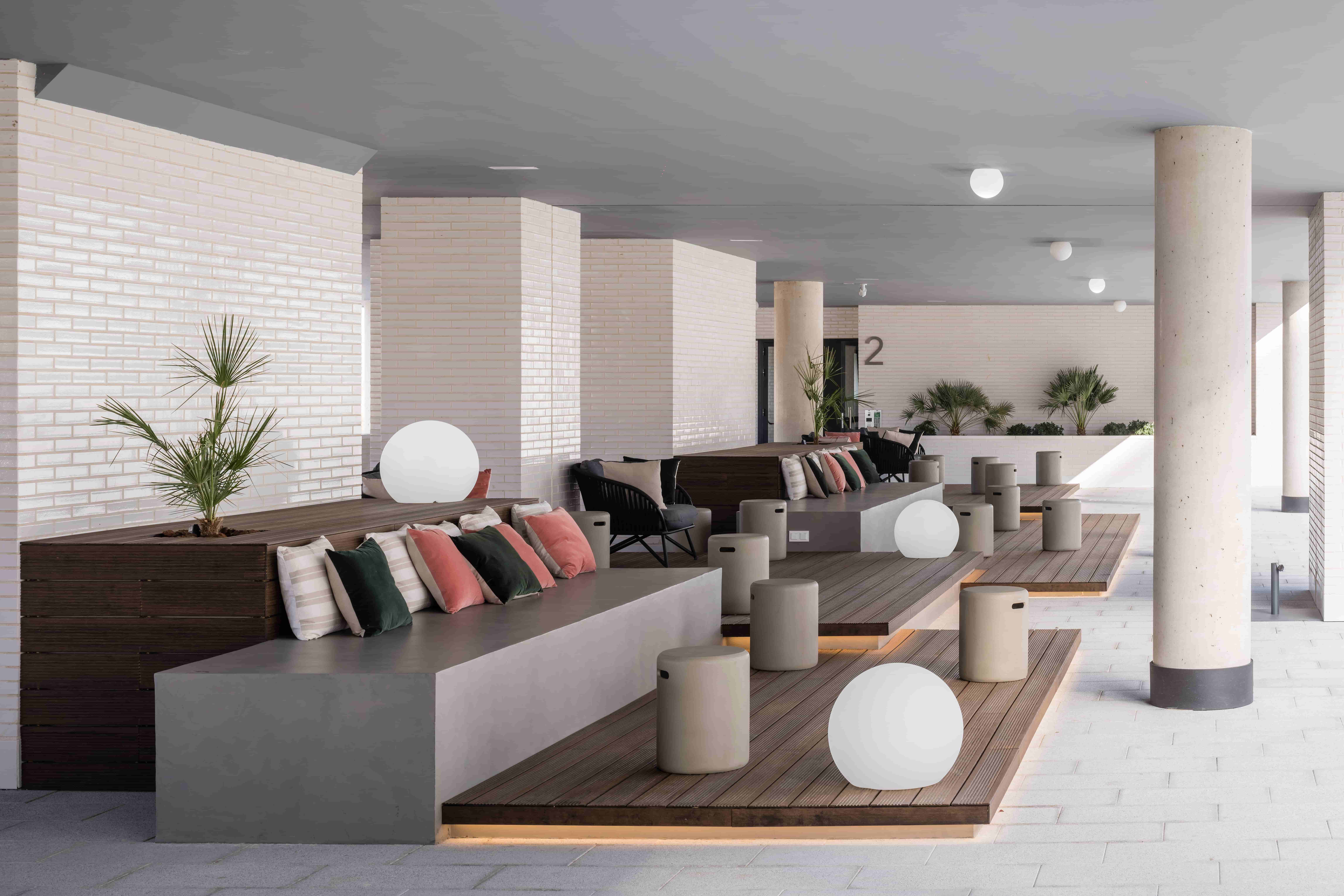
Working the limit is one of the keys they defend in Alfaro-Manrique to avoid this residual use or even just linked to summer seasons as a solarium. “The indoor-outdoor line has to disappear to take the program and uses from one place to another.” They cite as an example the informal work and meeting areas outside coworking spaces developed by the firm. Efficiently combining transition zones, thresholds, the way of incorporating vegetation or shadows are, in the opinion of this study, “determining factors” to achieve this.
Another of the guidelines you should follow is designing in a joint and complementary way, “seeking a deep relationship between areas,” according to ISG. In this way, the correct conditioning of these spaces will be another relevant factor to consider in order to transcend the sporadic enjoyment of the environment.
The materials you should use outdoors
Of course, each project, each professional or client… is a world of its own, and must be taken into account in order to provide the most appropriate response. In this line, the choice of material depends “both on the geographical location of the building and the relationship of the asset with the city“, as ISG defends. They point out that the same alternative will not be equally valid in terms of performance for Andalusia as for the Basque Country, as well as highlighting the major differences between public and private use.
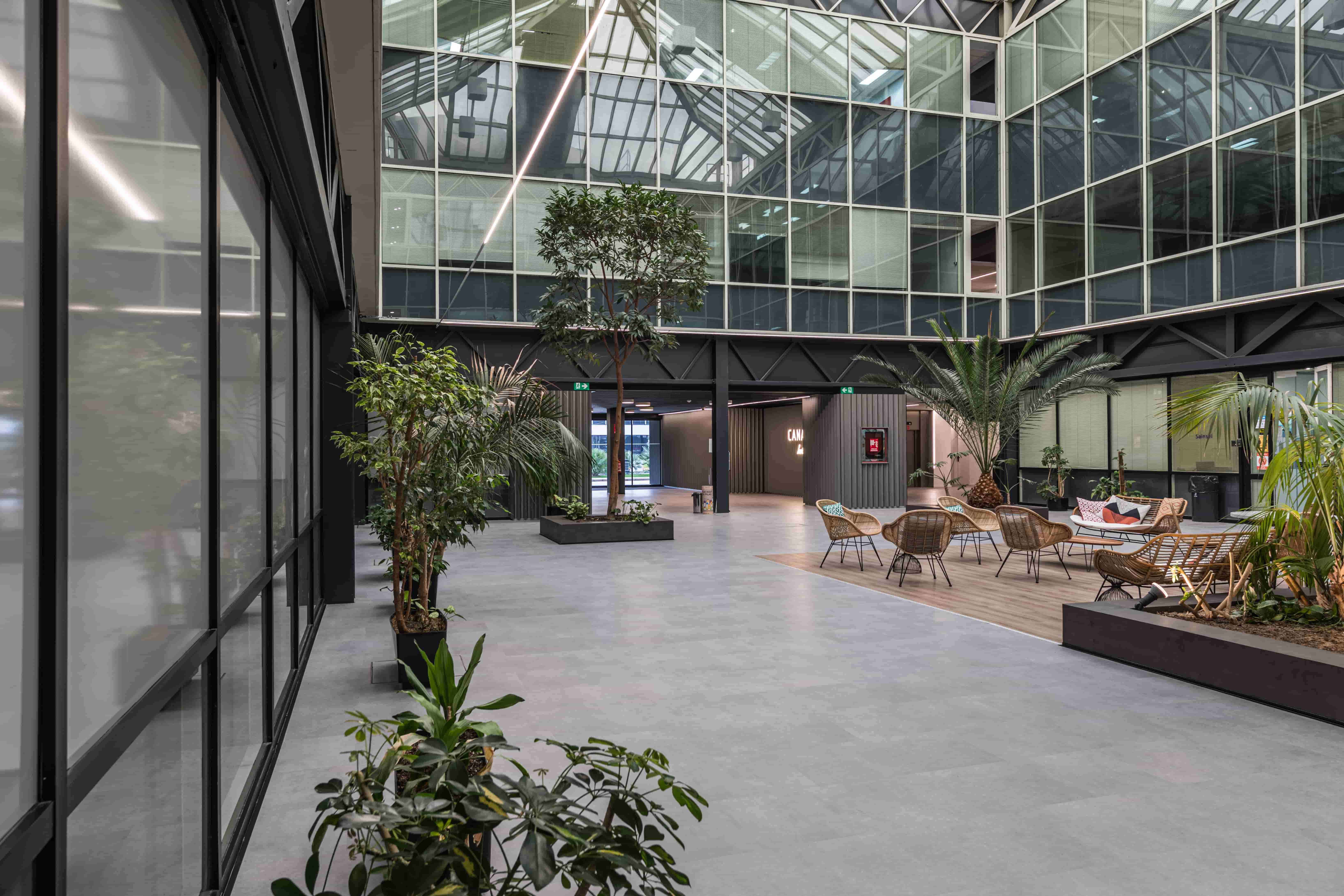
The two firms agree on the application of solid or synthetic woods, as well as other organic elements such as ceramics, stone, wicker or earth. “Steel, concrete or plastic could play a role,” they argue at ISG, “but always in a more punctual way, combining with intelligence to provide flexible and durable solutions.”
It is also interesting, as Alfaro-Manrique advises, “to give a complementary twist to the design, in order to highlight the great luxury of being able to develop part of the user experience in outdoor spaces, which are an imponderable value, even more so after the pandemic”.
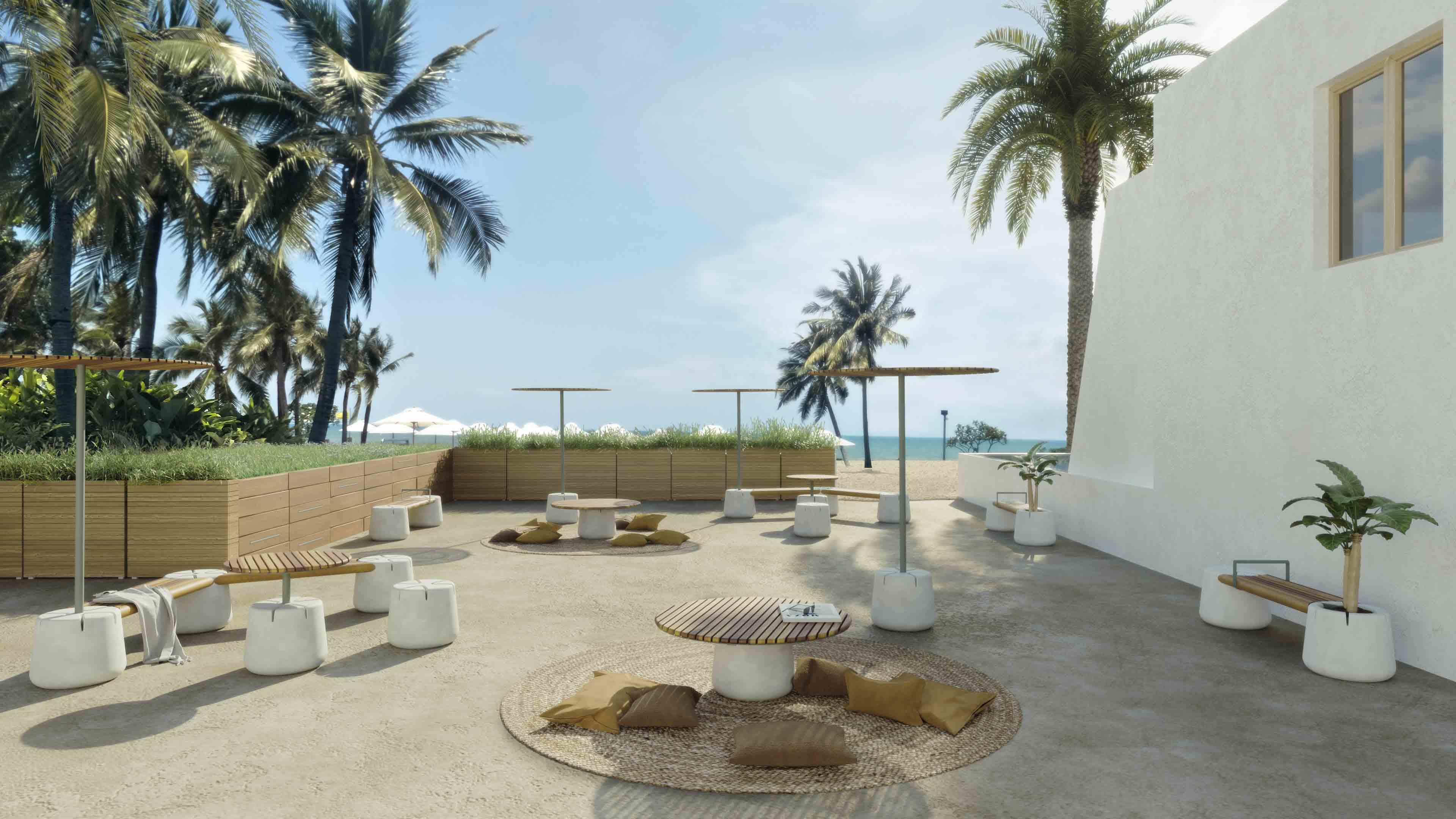
The perfect outdoor furniture
Speaking of conditioning, after considering the context and global approach of an outdoor area, it is time to furnish it. In addition to offering resistance to inclement weather, we collect some characteristics that will help you to consider the most appropriate in your project:
- Flexibility: “both in its use and in possible configurations,” ISG explains.
- Maintenance: “if we want it to last, it must be easily maintainable and, of course, recyclable”, as ISG states.
- Design: Alfaro-Manrique values customizing, and in their case they do so by applying “an almost landscape approach or as pieces of furniture”.
Do you plan the outdoor areas of your projects in this way? Comment your impressions on social networks using the hashtag #ConnectionsByFinsa. We want to be your point of connection with what concerns and inspires you.


